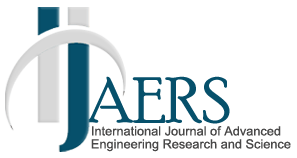Effects of an Exercise Program on the Levels of Arterial Blood Pressure Older Women, Hypertension and Sedentary in Pharmacological Treatment Process |
| ( Vol-5,Issue-7,July 2018 ) OPEN ACCESS |
| Author(s): |
Helio Franklin Rodrigues de Almeida, Leonardo Severo da Luz Neto, FabrÃcio Moraes de Almeida, Luiz Carlos Cavalcanti de Albuquerque, MarcuceAntonio Miranda dos Santos, Liliane Lellis, Eunice Ribeiro Beltrão |
| Keywords: |
|
hypertension, older women, physical training, Exercise Program, Pharmacological treatment. |
| Abstract: |
|
The objective of this study was to investigate the changes caused by a program of physically-based physical exercises in the arterial blood pressure (SBP) values of elderly, hypertensive and sedentary women undergoing pharmacological treatment. Two study groups were formed, totalizing 33 subjects with ages ranging from 60 to 75 years, which were constituted as follows: a) an experimental group (EG), composed of 18 hypertensive and sedentary students, under pharmacological treatment and attending the Center of Physical Activity of the Banco do Brasil Athletic Association of ItaberaÃ, Goiás, Brazil, which during the experiment were regularly submitted to physical exercise routines (Age: 63.8 ± 14.8, Body Weight: 74.7 ± 13.8, Height: 165.8 ± 12.6); and b) a control group (CG), composed of 15 students also hypertensive and sedentary, under pharmacological treatment, who during the study were not submitted to physical training routines (Age: 71.6 ± 15.1; Body Weight: 68, 3 ± 13.8, Height: 160.3 ± 12.8). The experimental procedure had a total duration of 10 weeks, in which the EG was submitted to aerobic physical exercises controlled by the perceived effort index, associated with resistance exercises aimed at localized muscular resistance, and the training sessions were performed on Mondays, Wednesdays and Fridays 60 minutes each. At the end of the procedures the statistical analysis allowed to observe that the PASS scores presented by the SG and GC accounted for p = 0.000 and p = 0.150, indicating statistical significance only for SG, whose mean values ​​were reduced by 6.5 mmHg, differently from the scores of CG, which decreased by only 0.5 mmHg, representing 5.16% and 0.36% of functional improvement in the variable in question. A similar behavior was found when analyzing the PASD values, which at the end of the experimental procedure had a p = 0.017 and p = 0.051 for the EG and CG, respectively. Likewise, statistical significance was detected only in the EG, whose mean scores decreased numerically by 4.0 mmHg, distinct from the CG that involved only 0.7 mmHg, meaning 4.60% and 0.82 %% of physiological improvement in the variable under discussion. These findings suggest that a physical exercise program built on a scientific basis may be a valuable tool in nonpharmacological therapy for arterial hypertension. |
|
|
| Paper Statistics: |
| Cite this Article: |
| Click here to get all Styles of Citation using DOI of the article. |
- Track Your Paper
- editor.ijaers@gmail.com
- ISSN : 2349-6495(P) | 2456-1908(O)



Advanced Engineering Research and Science